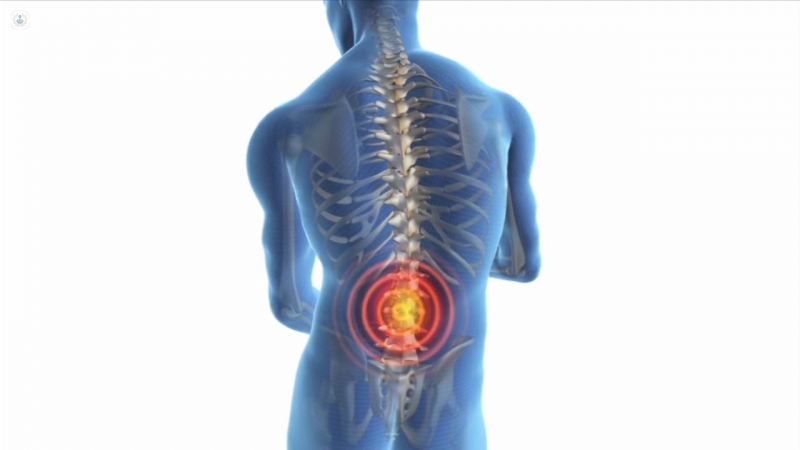


What is sciatica?
Sciatica is a very painful condition that can last for several days. It occurs due to the irritation of the sciatic nerve, which can happen through inflammation or injury. Sciatica is not a disease itself, but is a symptom of another health problem.

It usually causes a radiating pain that extends from the back to the leg, even reaching the feet. The muscles around the area tend to contract before the pain, worsening the situation. On other occasions, one of the spinal discs moves backwards, putting pressure on the nerve.
What are the symptoms?
The symptoms that sciatica produces can hinder quality of life. Some of the most common indicators include:
- Pain: the degree of pain can vary from a mild pain that hardly causes discomfort to a dull or very intense pain that hinders the ability to move.
- Tingling: occuring in the legs, calves and feet.
- Numbness: areas where pain and tingling occur may be numb.
- Weakness: it is very common to feel weakness in some parts of the body.
Causes of sciatica why it occurs
Sciatica pain is caused by inflammation or injury of the sciatic nerve, sometimes caused by compression in muscle contractures, a disc displacement in the spine, or a narrowing of the nerve channel.
The most common causes of sciatica are:
- Herniated disc
- Spinal stenosis
- Piriformis syndrome
- Lesion or fracture of the pelvis
- Tumours
Can it be prevented?
Sciatica cannot be prevented since it is not a disease, but a symptom. However, experts recommend regular exercise and practising good posture.
What is the treatment?
Because sciatica is a symptom of another condition, the cause must be identified and treated.
In some cases, no treatment is necessary and the sciatica gets better on its own. In other cases, medication, surgery, or physiotherapy may be indicated in order to alleviate the pain or to correct the problem.